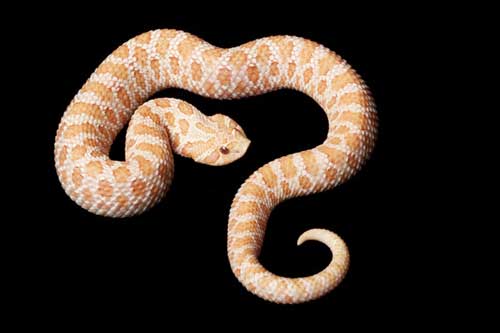
Description:
Scientific name: Heterodon nasicus
Life span: 9-20 years
Western hognose snakes have robust bodies and are quite small. Across subspecies, they differ greatly in terms of color and design. Male are often much smaller than females, rarely growing longer than 15-20 inches overall (including the tail). Women can grow to around 3 feet tall. On their backs and tummies, they feature a pattern in brown, gray, and black.
Native Region/Habitat
From southern Canada to the United States and up to northern Mexico, the western hognose snake can be found. In addition to prairies, river floodplains, scrub and grasslands, semi-deserts, and some semi-agricultural areas, it also frequents other locations with sandy or gravelly soils. It has been discovered at altitudes of up to 2,500 meters (8,200 feet).
Behavior:
Western hognose are diurnal, meaning they prefer to remain active during the day as they wait for their preferred prey, toads, to stray nearby. Western hognose are mostly calm, though some can be fiercely protective. They will hiss, puff up, and false strike while keeping their mouths shut and bending their necks downward (like cobras).
Care As a pet/In captivity:

They are frequently kept as pets in houses. Hognose snakes are often shy and would rather hide from predators in the wild than to attack. In captivity, they also don’t usually become hostile. After you establish a schedule for their housing and food, they are rather simple to manage.
- Depending on how big your snake gets, a 20-gallon tank is frequently plenty for one snake. Consider floor space more important than height because these snakes rarely climb.
- Provide a temperature gradient inside the enclosure with a basking section that is between 85 and 90 degrees Fahrenheit and a chilly side that doesn’t go below 70 degrees. You might need to experiment with various heat bulb wattages and heights to reach these temperatures.
- Hognose snakes require humidity between 40 and 70 percent. The humidity level varies a little depending on the species, and while shedding, snakes seem to prefer a little more humidity. The enclosure’s water dish will supply humidity, but if you need to increase the humidity, you can also lightly spritz the enclosure.
- Hognose will initially eat calcium-powdered gut-loaded crickets (crickets fed nutritious meals). Depending on how big the species grows, they’ll develop into pinkies, fuzzies, and possibly adult mice as they become older. A couple times per week is sufficient for feeding young hognose snakes and one prey item per week is usually sufficient for feeding fully developed snakes.
Table





